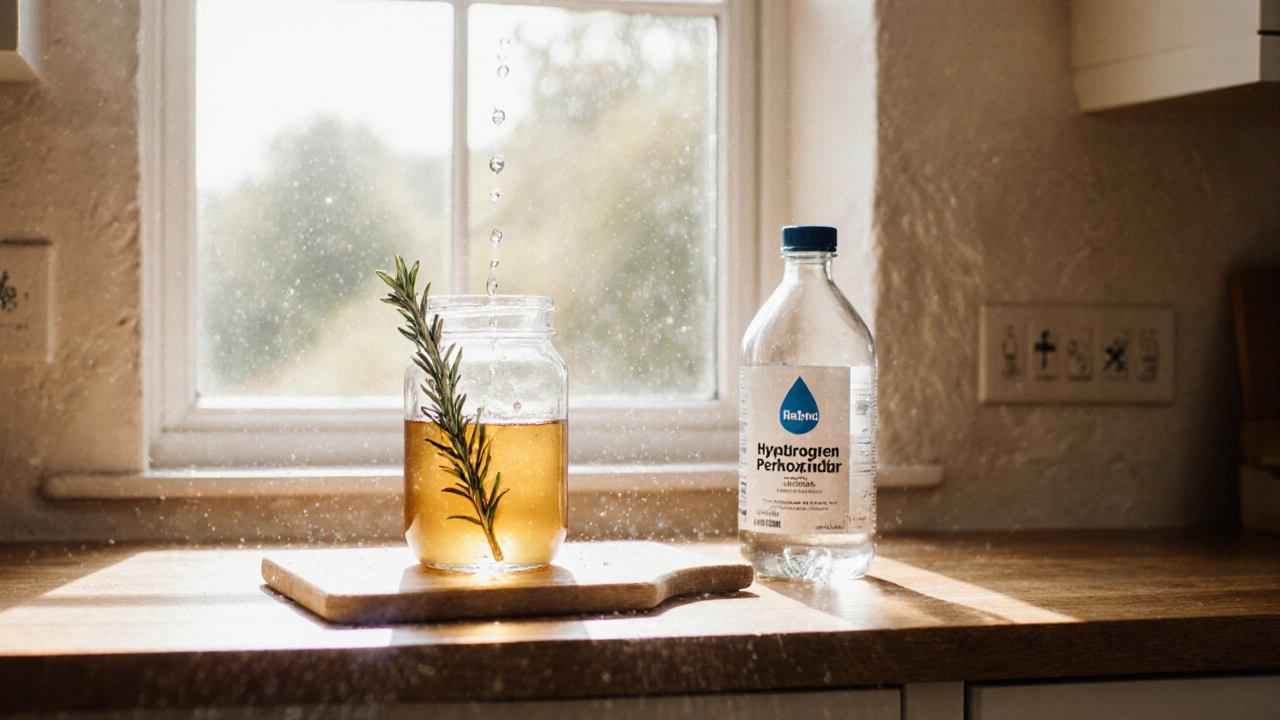Hydrogen Peroxide Disinfectant – Simple, Safe, and Strong
If you’re looking for a cheap, environmentally‑friendly sanitizer, hydrogen peroxide is worth a try. It’s already in most first‑aid kits, works on a wide range of germs, and breaks down into water and oxygen, so you won’t leave a chemical residue behind.
How to Make a Basic Hydrogen Peroxide Cleaner
All you need is 3% hydrogen peroxide (the kind you buy at the pharmacy) and a spray bottle. Fill the bottle with the peroxide, label it, and you’ve got a ready‑to‑use surface disinfectant. For tougher jobs, mix one part peroxide with one part water – this dilutes it just enough to protect delicate finishes while still killing bacteria and viruses.
Tip: Store the bottle out of direct sunlight. Light breaks down peroxide, reducing its effectiveness.
Everyday Uses and Safety Tips
Use the spray on kitchen counters, bathroom tiles, door handles, and even cutting boards. Let it sit for at least one minute before wiping it off; that gives the bubbles time to destroy germs.
Always wear gloves if you’re cleaning a large area or have sensitive skin. Avoid mixing peroxide with vinegar or bleach – the reaction can release harmful gases. If you spill it, simply rinse with water; the leftover oxygen will evaporate quickly.
For fabrics, spray a light mist on the spot, let it dry, then launder as usual. This works well on pillowcases, curtains, and even mattresses that have absorbed odors.
Need a deodorizing boost? Add a few drops of lavender or lemon essential oil to the bottle. The scent masks any faint peroxide smell without reducing the disinfecting power.
Hydrogen peroxide also shines as a stain remover. Apply it directly to wine or coffee spots, wait five minutes, then blot with a clean cloth. The bubbling action lifts the stain while sanitizing the area.
Remember to keep the bottle out of reach of children and pets. Though it turns into water, the undiluted solution can irritate eyes and skin.
Compared with bleach, peroxide is less likely to corrode metals or fade colors, making it a better choice for stainless steel appliances and colorful tiles. It’s also safer for indoor air quality because it doesn’t release strong fumes.
In short, hydrogen peroxide gives you a versatile, non‑toxic disinfectant that works on most surfaces. Mix, spray, wait, and wipe – that’s all it takes to keep germs at bay without stocking a cabinet full of chemicals.

Vinegar vs Hydrogen Peroxide: Which Disinfects Better?
Compare vinegar and hydrogen peroxide as disinfectants, covering their chemistry, effectiveness against germs, safety, usage tips, and best‑fit scenarios for home cleaning.
Read More